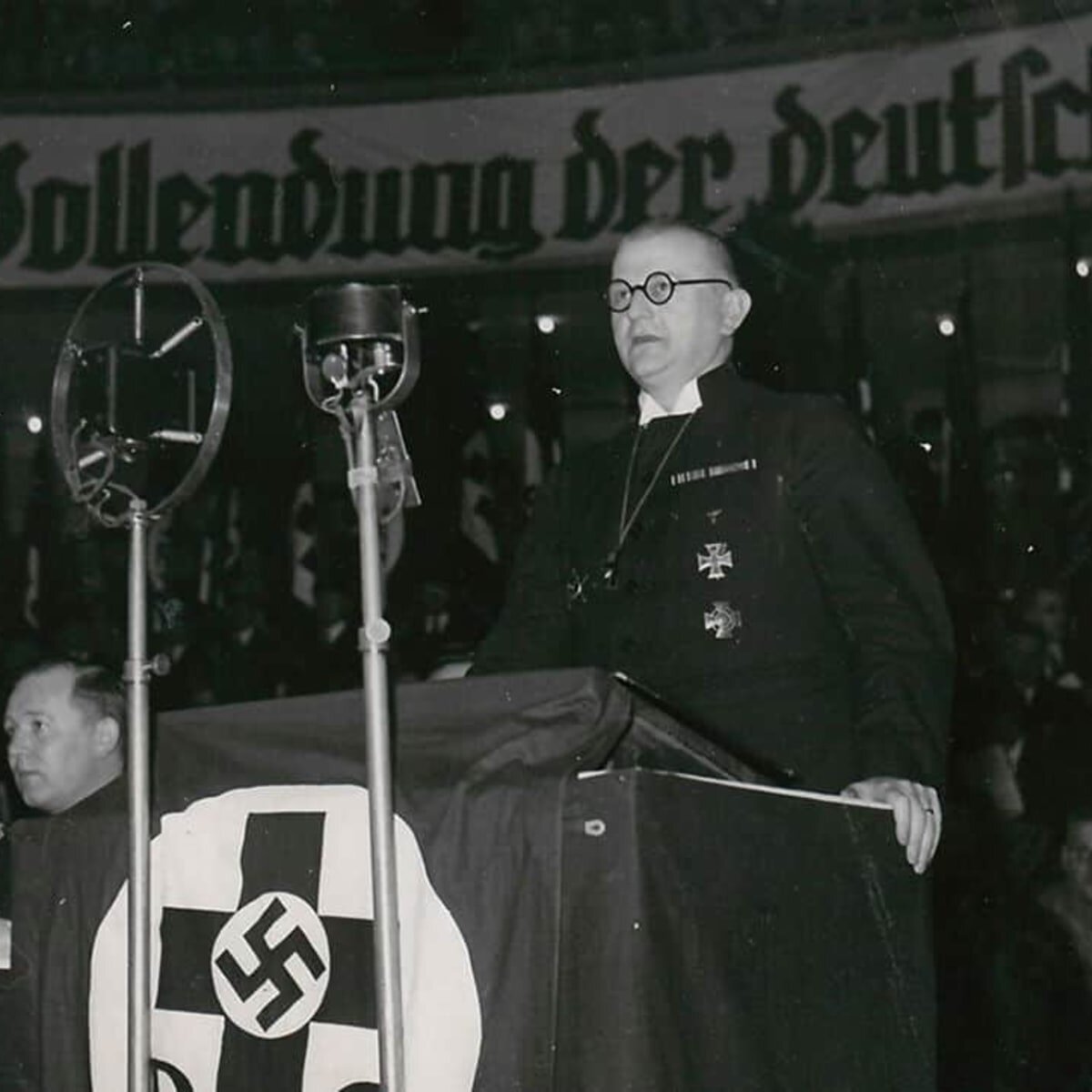
Agrandissement : Illustration 1

Germany, like the rest of Europe, was primarily Christian when the Nazis rose to power. In 1933 the country had approximately 45 million Protestant Christians, 22 million Catholic Christians, 500,000 Jews and 25,000 Jehovah’s Witnesses. Religion was a huge part of people’s everyday life and culture.
As with trade unions and other group organisation’s, the Nazis saw religion as a threat to their total power.
Jews and Jehovah’s Witnesses were the major religious minorities in Germany in the 1930s. Hitler and the Nazis oppressed and persecuted all Jews. Jehovah’s Witnessesfaced similar persecution and oppression for their disobedience to the regime.
As the majority religion, the Nazis approached the complex ‘problem’ of Christianity differently. Whilst the Nazis believed that Christianity and Nazism were ideologically incompatible, they were not initially openly hostile to the Protestant and Catholic Churches.
In his first speech as chancellor, Hitler acknowledged the ‘central’ role that Christianity played in Germany. However, this approach did not last long.
Treatment of Catholicism
Catholics made up a smaller faction of the population than Protestants, but still made up approximately one third of the population.
As Catholics had a single, central leader in the Pope, infiltrating and taking control of the religion was extremely difficult. Instead, Hitler opted for a policy of conciliation towards Catholics.
In July 1933, the Nazis signed a Concordat with the Vatican. The Concordat agreed that the Nazis would not interfere in the Catholic Church. In return, the Vatican would diplomatically recognise the Nazi regime.
The Nazis soon broke their Concordat with the Vatican. The Ministry for Church Affairs was established in 1935 with a range of anti-religious policies aimed at undermining the influence of religion on the German people.
Catholic schools were gradually shut. As the regime intensified its oppressive policies in the late 1930s, members of the Catholic Clergy were killed and imprisoned for opposing the Nazi regime. Johannes Neuhäusler is just one example of a Catholic priest who was imprisoned at the hands of the Nazis.
Treatment of Protestantism
Protestantism was the primary religion in Germany and the Protestant Church was viewed as one of the main pillars of society. There were many different factions of Protestantism in Germany. These different factions, and lack of a single central leader, made Protestantism easier for the Nazis to infiltrate than Catholicism.
Some Protestants supported the Nazis during their rise to power. They had been hostile to the Weimar Republic, and agreed with some of the Nazis policies. These protestants were known as ‘German Christians’.
As part of the Gleichschaltung process, the Nazis’, with the support of the German Christians, established the Reich Church under the leadership of Ludwig Müller in 1933. The Reich Church aimed to be a new national church which advocated a form of Nazi Christianity. It instructed preachers to exclude any teaching from the Old Testament, as this was considered a Jewish document.
However, not everyone was willing to accept this new church. In 1934, the Confessing Church was founded by Martin Niemöller. The Confessing Church openly opposed the Nazi regime, and stressed the church’s autonomy from political interference. Many of the pastors from the Confessing Church, such as Niemöller, were imprisoned in concentration camps for their views.
Source: The Holocaust Explained



